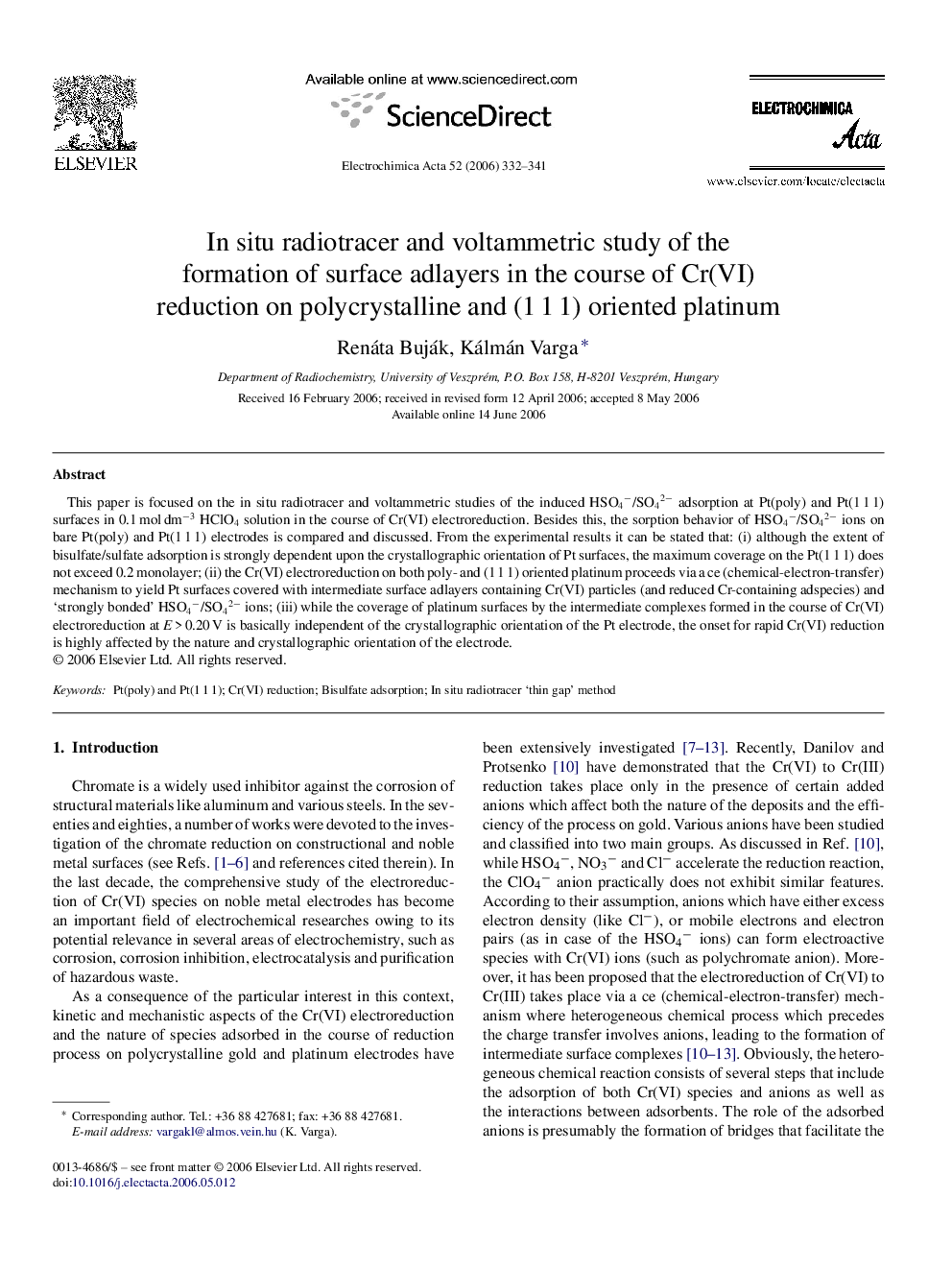| Article ID | Journal | Published Year | Pages | File Type |
|---|---|---|---|---|
| 194542 | Electrochimica Acta | 2006 | 10 Pages |
This paper is focused on the in situ radiotracer and voltammetric studies of the induced HSO4−/SO42− adsorption at Pt(poly) and Pt(1 1 1) surfaces in 0.1 mol dm−3 HClO4 solution in the course of Cr(VI) electroreduction. Besides this, the sorption behavior of HSO4−/SO42− ions on bare Pt(poly) and Pt(1 1 1) electrodes is compared and discussed. From the experimental results it can be stated that: (i) although the extent of bisulfate/sulfate adsorption is strongly dependent upon the crystallographic orientation of Pt surfaces, the maximum coverage on the Pt(1 1 1) does not exceed 0.2 monolayer; (ii) the Cr(VI) electroreduction on both poly- and (1 1 1) oriented platinum proceeds via a ce (chemical-electron-transfer) mechanism to yield Pt surfaces covered with intermediate surface adlayers containing Cr(VI) particles (and reduced Cr-containing adspecies) and ‘strongly bonded’ HSO4−/SO42− ions; (iii) while the coverage of platinum surfaces by the intermediate complexes formed in the course of Cr(VI) electroreduction at E > 0.20 V is basically independent of the crystallographic orientation of the Pt electrode, the onset for rapid Cr(VI) reduction is highly affected by the nature and crystallographic orientation of the electrode.
